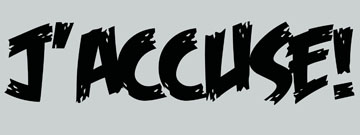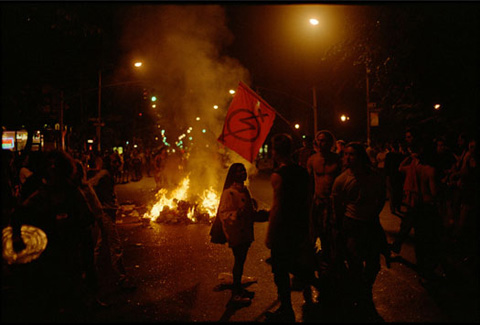It’s been dubbed “The People’s Mic,” a call and response system devised to circumvent city rules banning amplification devices in parks without a permit. “If you are interested…” belts out one protestor, a woman around 25 wearing a black hoodie, jeans, and thick glasses.
“If you are interested,” we, the 500 currently occupying Zuccoti Park, answer in turn.
“In canvassing for tomorrow’s march…”
“In canvassing for tomorrow’s march…”
“Please come to the information desk for materials…”
“Please come to the information desk for materials…” The people’s mic has been used in the general assembly, an experiment in direct democracy ala Athens or Chiapas. We use the mic to carry the voices of speakers. I’ve seen Michael Moore, Nobel Prize winner Joe Stieglitz and even the great pop-philosopher Slavoj Zizek stand up and address the crowd using this genius call and response system. It’s now Week 4 of #occupywallstreet, the world’s first social movement born with a hash-tag. Bucking dismissals by the main stream press and low expectations by a jaded and defeated public, the “other 99%” are still here and no one plans are giving up. Preparations are already underway for winter. For the first time since 2004, when the Republican National Convention invaded our city, there is palpable, organized outrage on the streets. Sitting in Zuccoti, we can feel a movement growing under our feet. Occupations of bankster strongholds are popping up across the country. Here on Wall Street, there’s talk of people leaving to join the fledgling protests in their home towns; Boston, DC, Wilmington, Raleigh Durham, Seattle, LA, even Honolulu! This is growing into a movement and we all understand that it could actually materialize into something revolutionary. Now up to 900 cities worldwide are being occupied. The 99% is making itself known, and that in itself is exceptional.
But walking through the park, taking part in the marches, we are putting ourselves in harm’s way, and this has become more than apparent: it’s in the red eyes of mace victims and the bandaged night stick wounds on our foreheads. The NYPD which has been conscripted as a private army on the behalf of Jamie Dimon’s JP Morgan-Chase is breaking heads and casting nets. There’s a 24 hour guard standing in front of Dimon’s Park Avenue apartment. Like the Republican National Convention of 2004, we know whose side Ray Kelly and his goon squad are on. They might belong to a union, but they have nonetheless forsaken the working class, they’re defending Wall Street with violence. The more veteran activists in the park all bear scars from previous social movements. Those who have been maced or beaten this time around compare their wounds with those from the Vietnam era, the protests against the WTO in Seattle and Geneva or the RNC. Zuccoti Park is beginning to resemble the Paris commune, as more and more activists are learning the true meaning of political violence. The people’s mic system has been used in nonviolence training and is a tool in rounding up the injured to provide medical care.
This place is incredible, it’s radicalizing, it’s essential, but will it dismantle corporate greed? The short answer is no. The whole problem goes back to repressive tolerance. As long as we hold onto the park, our issues will be discussed, but at the same time no one here is storming the Bastille (at least yet). The people occupying wall street and public spaces around the world, a mix of longtime activists and newbies; mostly of the left but some even identifying as tea-baggers, are not yet a large scale social movement, they are the roots of one. As beautiful an act the occupation is, like the labor protests in Wisconsin, the billionaires still win at the end of the day. They still go to bed comfortable while activists sleep under tarps and the growing number of homeless sleep in subway tunnels. Not one billionaire’s life has yet been disrupted.
This is not yet a full blown movement. Zuccoti is a petri dish for democratic action and one day soon a movement will arise out of the encampments. Like any march, demonstration, or direct action, we protest not necessarily to be listened to but to stand up and be counted. Only the most naïve in this park believe that the occupation alone will bring about economic and environmental justice. But, those who have actually slept in the park for a month now, they have injected radicalism back into the body politic, and that in itself is a secular blessing. There’s no place any of us would rather be.

